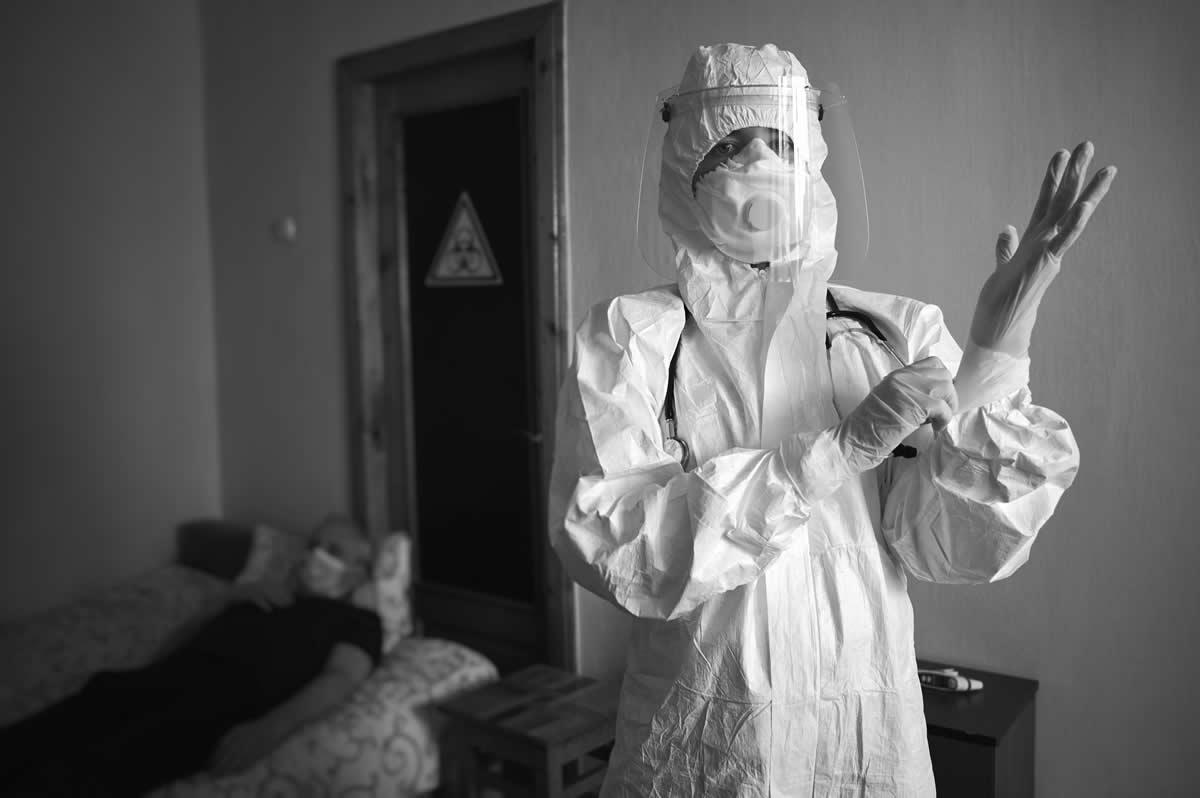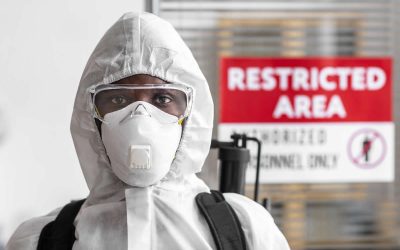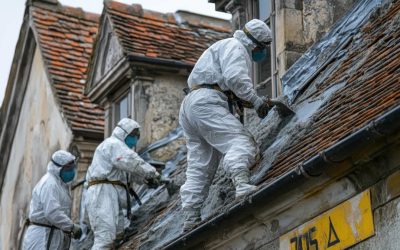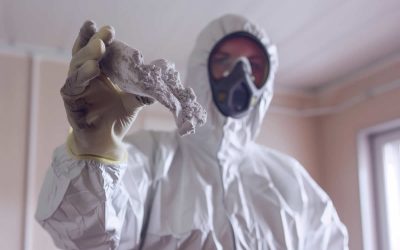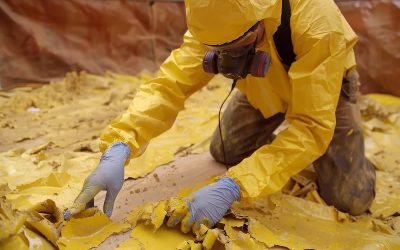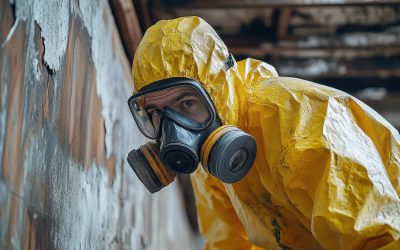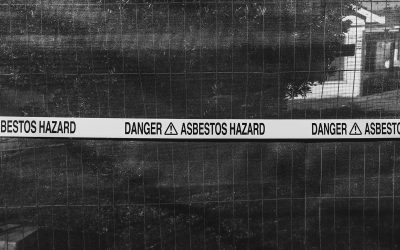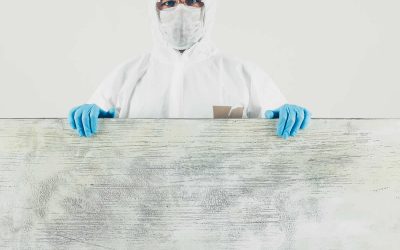You might wonder if you can spot asbestos just by looking. It’s a fair question. After all, if asbestos is so dangerous, it feels like you should be able to recognise it straight away. But the truth is, it’s not that simple.
You can’t always see asbestos. Most of the time, it’s hidden in places you wouldn’t expect. Even when it’s right in front of you, it often looks like ordinary building materials. That’s what makes it so risky.
In this post, we’re going to walk through everything you need to know about asbestos — where you might find it, what it looks like, why it’s so hard to spot, and what you should do if you think you’ve come across it.
What Exactly Is Asbestos?
Before we talk about spotting asbestos, it helps to understand what it is. Asbestos is a natural mineral. It was used heavily in construction for most of the 20th century. Builders loved it because it’s strong, heat-resistant, and doesn’t easily catch fire.
You’ll find it in loads of older buildings. Houses, schools, factories — you name it. Anywhere built before the year 2000 could still have asbestos somewhere in the structure.
There are actually six different types of asbestos, but the main ones used in the UK were:
- Chrysotile (white asbestos)
- Amosite (brown asbestos)
- Crocidolite (blue asbestos)
Each type looks slightly different under a microscope. To the naked eye, though, you’d struggle to tell them apart — or even recognise them at all.
Can You See Asbestos with Your Eyes?
The short answer is: not really.
The longer answer is: sometimes you can see materials that are likely to contain asbestos, but you won’t know for sure without proper testing.
Here’s the thing: asbestos fibres are tiny. You can’t see individual fibres floating in the air. They’re invisible to the naked eye. And that’s when they’re most dangerous — when they break free from materials and get into the air you breathe.
The materials that contain asbestos, though, can often look completely ordinary. Some of the common ones include:
- Insulation boards
- Ceiling tiles
- Roofing sheets
- Floor tiles
- Pipe lagging
These things could be packed with asbestos, but to you, they might just look like any other old tile, board, or pipe covering.
What Does Asbestos Look Like?
If you ever do see asbestos in its raw, loose form (which is rare outside of mining sites), it looks a bit like fluffy, fibrous cotton wool. It can be white, blue, or brown, depending on the type.
But that’s not usually what you’re dealing with. In buildings, asbestos is mixed into other materials. It’s bound up in cement, sprayed onto ceilings, packed into insulation, or pressed into floor tiles.
Here’s a rough idea of what asbestos-containing materials might look like:
- Asbestos cement often looks like grey, weathered concrete.
- Asbestos insulation board resembles plasterboard but might feel denser and heavier.
- Floor tiles containing asbestos might look like any old vinyl or linoleum tile.
- Pipe lagging could be wrapped in a white or grey covering that flakes easily when disturbed.
But none of these give the game away. They could easily be non-asbestos materials, too. You can’t tell just by looking.
Why Is It So Hard to Identify?
Asbestos fibres are microscopic.
When they’re sealed inside materials, there’s no outward sign they’re there.
And over time, many of the places where asbestos was used have been painted over, repaired, or covered up. Layers of paint, plaster, or carpet can hide asbestos from view entirely.
To make things more complicated, builders often mixed asbestos with other materials. That means even two pieces of insulation board that look exactly the same could be completely different — one safe, one packed with asbestos.
This is why professionals never rely on guesswork. They take samples, send them to a lab, and get scientific testing done. It’s the only way to be sure.
Where Are You Most Likely to Find Asbestos?
If your home, office, or workplace was built before 2000, there’s always a chance asbestos might be hiding somewhere.
It was used for all sorts of things because of its durability and fireproofing qualities.
Common places include:
- Loft insulation (especially around water tanks)
- Wall and ceiling panels
- Pipe insulation
- Garage roofs and sheds (especially corrugated cement panels)
- Textured coatings (like Artex ceilings)
- Floor tiles
- Electrical fuse boards (older ones sometimes have asbestos parts)
It’s not just industrial buildings either. Loads of houses — even semi-detached suburban ones — were built with asbestos materials.
Should You Be Worried?
If the asbestos-containing material is in good condition and left undisturbed, it usually isn’t a risk.
The danger comes when the material gets damaged, broken, cut, drilled, or sanded. That’s when fibres are released into the air, and that’s when you could breathe them in.
Breathing in asbestos fibres can cause serious illnesses, but those usually take many years to develop. That’s why safety is so important now — to protect your future health.
If you suspect asbestos is present, you should avoid touching or disturbing it. Always get professional advice before doing anything.
What to Do If You Think You’ve Found Asbestos
If you think you might have found asbestos, don’t panic.
But don’t disturb it either.
Here’s what you should do:
- Leave it alone — Don’t try to move, cut, or even brush the material.
- Keep the area clear — Keep other people (especially children and pets) away.
- Get professional help — Contact a licensed asbestos surveyor. They can test the material and advise you on what to do next.
If the material is damaged (broken ceiling tiles, cracked panels, crumbling lagging), it’s especially important to get it checked quickly.
Can You Test for Asbestos Yourself?
Technically, you can buy asbestos testing kits. These usually involve taking a small sample yourself and sending it to a lab.
But taking a sample is dangerous if you don’t know what you’re doing.
Breaking, cutting, or disturbing materials could release fibres into the air.
That’s why it’s much safer — and usually legally required in workplaces — to use trained professionals. They know how to take samples safely and wear proper protective equipment.
How Professionals Spot Asbestos
Licensed asbestos surveyors have the experience and training to spot the signs.
They’ll often carry out either a:
- Management Survey — to locate asbestos that could be disturbed during normal use.
- Refurbishment and Demolition Survey — more in-depth, needed before building work.
They take small, controlled samples and send them to an accredited lab.
There, specialists use powerful microscopes to look for asbestos fibres.
This is the only way to be absolutely sure.
Final Thoughts
So, can you see asbestos? Most of the time, no. Not properly.
You might see materials that are likely to contain asbestos. You might even get a feeling something is “old enough” to have asbestos in it. But unless it’s tested, you just can’t know for sure.
That’s why it’s crucial not to take risks. If you suspect anything, leave it alone. Call in the professionals, get it tested, and stay safe. Your health — and the health of anyone living or working with you — is too important to take chances with.
Better safe than sorry.
Are you looking for Asbestos Removal in Lancashire? If so, contact us now!
Asbestos Removal Beckton – Asbestos Removal Woodcote – Asbestos Removal Eden Park
